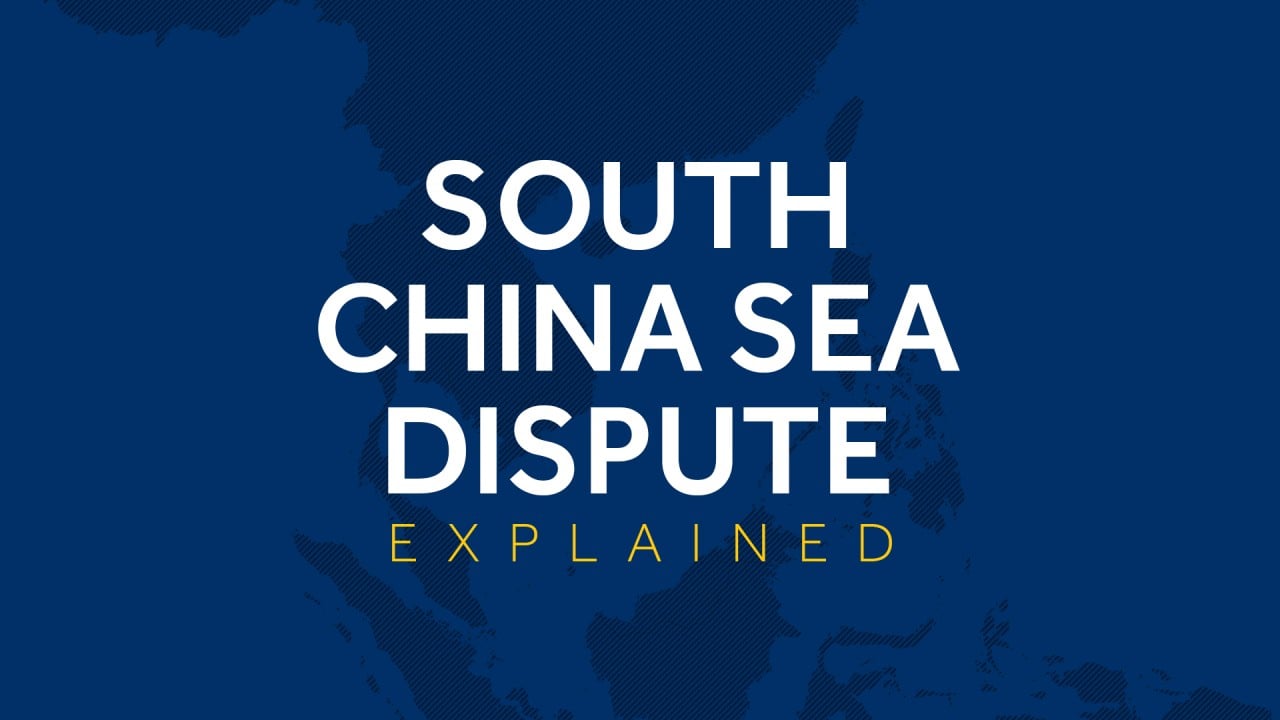
The US is finally taking sides in the South China Sea – against Beijing’s claims
- By aligning the US more closely with the tribunal’s finding in 2016, Pompeo effectively states the nine-dash line has ‘no basis in international law’
- While the secretary of state was careful not to say whether Washington favoured one claimant over another, the US finally appears to be taking a side – against China
The battle lines are being drawn and the arena of competition has been chosen. The South China Sea is fast becoming the crucible for competition between the United States and China.
Areas of the South China Sea are disputed by seven claimants: Brunei, China, Indonesia, Malaysia, the Philippines, Taiwan and Vietnam. Five of these claimants occupy islands, reefs and shoals in the South China Sea, with more than 90 outposts according to the Asia Maritime Transparency Initiative.
The sea is therefore a hotbed of competition among regional states, with overlapping claims, a plethora of military outposts, and regular military and paramilitary activity to intimidate, coerce or restate claims. Two military skirmishes have occurred in the past 50 years between China and Vietnam as both sought to deploy troops on disputed features in the sea.

03:23
The South China Sea dispute explained
One of its most important rulings were that none of the features in the Spratly Islands, a collection of 200 or so features in the south of the sea, were natural islands. This is significant because only natural islands are legally entitled to a 200 nautical mile exclusive economic zone that allows states rights to all marine resources in that area.
The ruling states that the largest features are rocks, which are entitled to a 12 nautical mile territorial sea. It transforms the Spratly Islands from one large, contiguous blob of exclusive marine rights to a series of unconnected dots with smaller areas of sovereign rights.
The US has until now taken a nuanced and cautious stance towards the tribunal’s ruling and the South China Sea claims. The Barack Obama administration rhetorically supported the tribunal process and urged all parties to abide by its findings. It suggested that claimant states should resolve their disputes peacefully and avoided directly criticising China.
The US now sides much more clearly with China’s rivals in the South China Sea. Pompeo lists not only China’s dispute with the Philippines but features and waters claimed by Vietnam, Malaysia, Indonesia and Brunei. The statement suggests the US is eager to protect the rights of these smaller states against what Pompeo claims is China’s attempt to form a “maritime empire” in the South China Sea.

02:32
Washington’s hardened position on Beijing’s claims in South China Sea heightens US-China tensions
Pompeo is adding verbal clarity to the more assertive US actions in recent months and stating for the first time what its naval activity has insinuated – that the US will support the activities of rival claimants in the sea.
For the US, the South China Sea offers an opportunity to underline its principles-based strategy of a “free and open Indo-Pacific”.

01:30
More footage emerges from 2018 near collision of US and China warships in South China Sea
Critics of the US can point to hypocrisies. The US Senate, for instance, has yet to ratify the UN Convention on the Law of the Sea, the single defining agreement for international maritime law. Also, instances of US forces being deployed without international legal backing abound.
Nevertheless, the US can make a simple argument with regard to the South China Sea, and Pompeo’s statement brings that argument into focus. While Pompeo was careful not to say whether Washington favoured one claimant’s position over another’s when it came to the issue of sovereignty, the US finally appears to be taking a side.
It may not be for one country’s claims, but it is certainly against China’s. What comes next is likely more military tension, sanctions and a war of words from both sides.
Christian Le Miere is a foreign policy adviser and founder of Arcipel, a strategic consultancy

